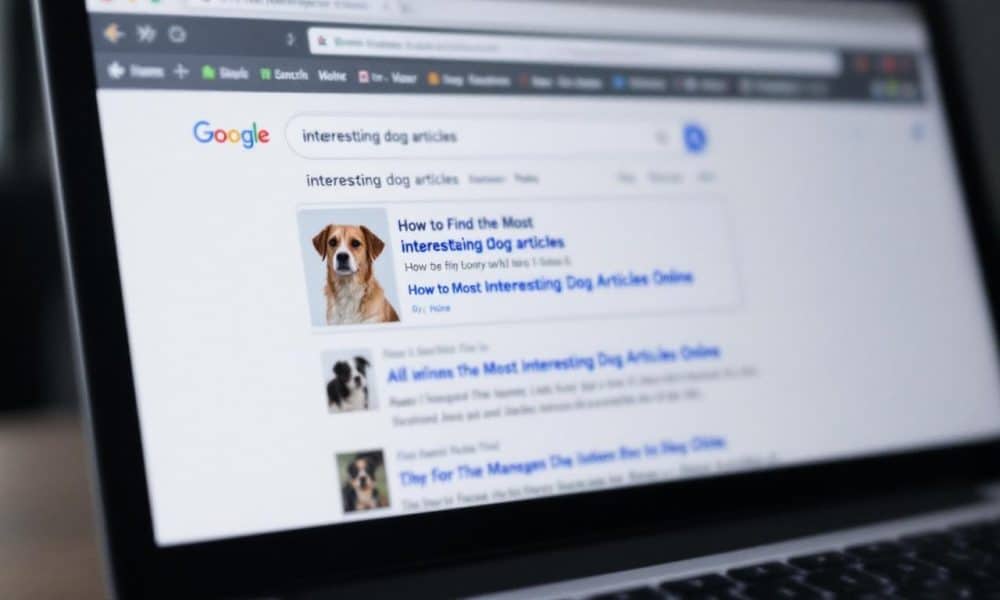
“This post contains affiliate links, and I will be compensated if you make a purchase after clicking on my links.”
At DogingtonPost, we know that grooming your furry friend is an essential part of pet care. Many dog owners are looking for tips on grooming their dogs at home to save time and money.
Regular grooming not only keeps your dog looking great but also promotes their overall health and well-being. In this guide, we’ll share expert advice on how to groom your dog effectively in the comfort of your own home.
Essential Tools for At-Home Dog Grooming
At-home dog grooming requires specific tools to ensure your furry friend looks and feels their best. We have compiled a list of essential items you’ll need to groom your dog effectively and safely.
Brushes and Combs
The right brush can transform your grooming routine. Short-haired breeds benefit from a bristle brush to remove loose fur and distribute natural oils. Long-haired dogs need a slicker brush to detangle and remove mats. A metal comb helps work out stubborn knots (especially useful for double-coated breeds).
Nail Care Tools
Trimmed nails contribute to your dog’s comfort and health. Invest in quality dog nail clippers or a grinder. The Millers Forge Professional Nail Clip stands out as a popular choice among pet owners. If you worry about cutting too close to the quick, a grinder (like the Dremel 7300-PT) offers a safer alternative.
Bathing Essentials
Proper bathing products maintain your dog’s skin health. Select a dog-specific shampoo and conditioner to preserve the pH balance of your pet’s skin. Human products can cause irritation, so avoid them. The Earthbath All Natural Pet Shampoo provides a gentle, effective option for most dogs (and it’s eco-friendly too).
Ear and Dental Care
Clean ears prevent infections and keep your dog comfortable. Use a veterinarian-approved ear cleaning solution and cotton balls. For dental hygiene, a dog toothbrush and toothpaste are must-haves. Veterinarians often recommend the Virbac C.E.T. Enzymatic Toothpaste for its effectiveness in reducing plaque and tartar.
Grooming Table and Restraints
A grooming table elevates your dog to a comfortable working height and provides stability. Look for a table with a non-slip surface and an adjustable arm (to secure your dog safely). Grooming restraints, such as a grooming loop or harness, help keep your dog in place during the grooming process.
Quality tools simplify the grooming process and make it more enjoyable for both you and your dog. While the initial cost might seem high, these tools will save you money compared to professional grooming services. Now that you have the right tools, let’s move on to the step-by-step guide for grooming your dog at home.
How to Groom Your Dog Like a Pro

Brushing Your Dog’s Coat
Brushing forms the foundation of good grooming. For short-haired dogs, use a bristle brush in short, gentle strokes. Long-haired breeds need a slicker brush to work through tangles. Always brush in the direction of hair growth to avoid irritation.
For double-coated breeds (like German Shepherds or Huskies), use an undercoat rake first, then follow with a slicker brush. This technique removes loose undercoat and prevents matting. Short-haired dogs might need brushing a few times a week, and double-coated breeds might benefit from daily brushing during shedding seasons.
Bathing Your Furry Friend
Bathe your dog every 4-8 weeks, depending on their lifestyle and coat type. Start by thoroughly wetting your dog’s coat with lukewarm water. Apply a small amount of dog shampoo, work it into a lather from neck to tail. Avoid getting water or soap in their eyes and ears.
Rinse thoroughly until the water runs clear. This step prevents skin irritation from leftover soap. Follow up with a dog-specific conditioner if needed, especially for long-haired breeds.
Nail Trimming Made Easy
Many dogs dislike nail trims, so start slow. Get your dog used to having their paws handled before attempting to trim. When you’re ready, use sharp clippers designed for dogs. Cut small amounts at a time to avoid hitting the quick (the blood vessel inside the nail).
If you’re unsure, ask your vet to demonstrate proper technique. For dogs with black nails, it’s safer to trim small amounts frequently rather than risk cutting too much at once.
Ear and Dental Care
Check your dog’s ears about once a week for signs of infection like redness or odor, especially if your dog has had skin or ear issues in the past. Clean them with a veterinarian-approved solution and cotton balls. Never insert anything into the ear canal.
Try to brush your dog’s teeth daily. Use a dog-specific toothbrush and toothpaste. Start with short sessions, focus on the outer surfaces of the teeth where plaque tends to accumulate.
Tackling Common Grooming Challenges
If your dog resists grooming, start with short, positive sessions. Use treats and praise to create a pleasant association. For dogs with sensitive skin, look for hypoallergenic grooming products.
Matted fur requires patience. Use a dematting tool or comb to gently work through knots. If mats are severe, it’s best to seek professional help to avoid hurting your dog.
Consistent grooming sessions will make the process easier over time and help you spot potential health issues early. Now that you’ve mastered the basics of grooming, let’s explore how these practices contribute to your dog’s overall health and well-being.
Why Regular Grooming Matters for Your Dog’s Health
Regular grooming plays a vital role in maintaining your dog’s overall health and well-being. This practice offers numerous benefits that extend far beyond aesthetics.

Early Detection of Health Issues
Consistent grooming allows you to notice changes in your dog’s skin, coat, or body. You might feel a small lump that wasn’t there before or spot a patch of irritated skin while brushing. These findings warrant a quick check with your vet and can lead to early detection of potential health problems.
Enhanced Skin and Coat Health
Brushing does more than remove loose fur. It stimulates blood circulation to the skin, which promotes a healthier, shinier coat. This increased blood flow also helps distribute natural oils throughout the coat, keeping it moisturized and reducing the likelihood of dry, itchy skin (a common issue for many breeds).
Reduced Allergens in Your Home
Regular washing of your dog can significantly reduce recoverable allergen from dog hair and dander. For optimal reduction, dogs need to be washed at least twice a week.
Stronger Bond with Your Dog
Grooming sessions provide an opportunity for one-on-one time with your dog. This physical contact and focused attention can help strengthen your bond. Many dogs come to enjoy grooming time as a form of affection and care from their owners.
Prevention of Skin Issues
Regular grooming helps prevent skin issues such as matting, which can lead to painful skin irritations and even infections. It also allows you to check for external parasites like fleas or ticks, which can cause discomfort and transmit diseases.
Final Thoughts
Home grooming benefits both you and your furry companion. You will keep your dog looking and feeling their best through regular brushing, bathing, nail trimming, and dental care. These practices enhance your dog’s appearance and contribute to their overall health and well-being.
Consistency makes grooming easier over time. Your dog will become more comfortable with the process, turning it into a positive experience for both of you. Grooming also provides an opportunity to bond with your pet and monitor their health closely (which can help detect potential issues early).
We at DogingtonPost encourage you to implement these tips on grooming your dog at home. You’ll become more confident in your grooming skills, and your dog will learn to enjoy these pampering sessions. For more expert advice on dog care, nutrition, and lifestyle, visit our website.







